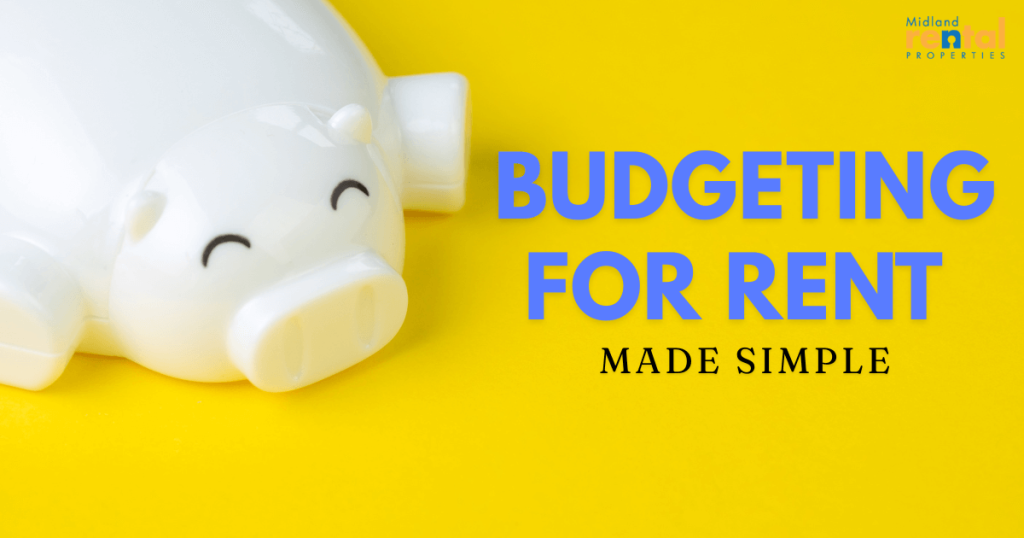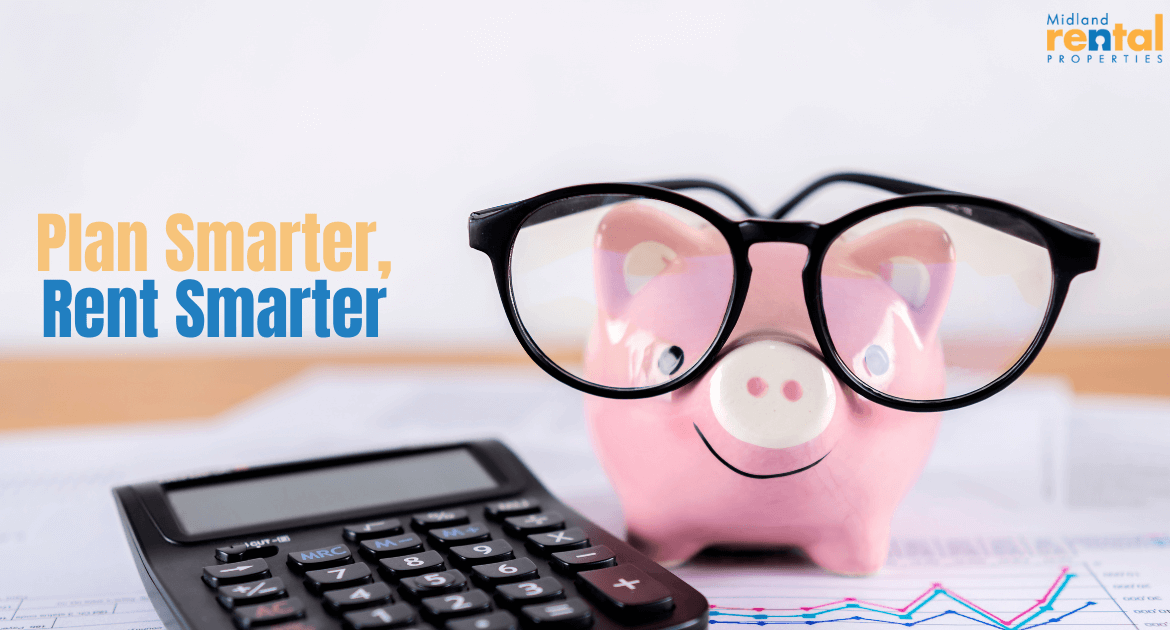Learning how to budget for rent is one of the most important steps for any renter. Nearly 44 million U.S. households rent, and according to the U.S. Department of Housing and Urban Development (HUD), housing is often the single largest monthly expense. Many renters underestimate the true costs of renting beyond the monthly payment, leading to financial stress.
If you’re looking for rental budgeting tips or want to understand how to budget for rent before signing a lease, this guide covers everything you need to know.

- Why Budgeting for Rent Matters
- Step 1: How to Budget for Rent with the 30% Rule
- Step 2: Factor in Utilities and Monthly Bills
- Step 3: Plan for Upfront Costs
- Step 4: Don’t Forget Hidden Costs of Renting
- Step 5: Build an Emergency Fund
- Step 6: Track Your Spending with Budgeting Tools
- Step 7: Be Realistic About Lifestyle Choices
- Quick Rental Budget Checklist
- FAQs: How to Budget for Rent and Plan Ahead
- Final Thoughts: Renting Smarter with a Budget
Why Budgeting for Rent Matters
Without a clear rental budget, you may find yourself living paycheck to paycheck. Budgeting ensures you:
- Stay within your financial comfort zone
- Avoid late payments and penalties
- Prepare for deposits and move-in fees
- Cover hidden costs of renting (like insurance or parking)
- Build financial stability for the long term
Step 1: How to Budget for Rent with the 30% Rule
A common guideline is the 30% rule — spend no more than 30% of your gross monthly income on rent.
Example:
- Monthly income: $4,000
- 30% of income: $1,200
- Recommended rent: $1,200 or less
But be flexible: in high-cost cities, renters often spend closer to 35–40%. On the other hand, aiming for 25% or less gives you more breathing room for savings and debt repayment.
Check out our rental listings that fit a variety of budgets
Step 2: Factor in Utilities and Monthly Bills
Rent is only part of the picture. Utilities can add several hundred dollars to your monthly costs.
Typical monthly ranges for a one-bedroom rental (U.S. averages, Bureau of Labor Statistics):
- Electricity: $100–$150
- Gas/Heating: $50–$100
- Water/Sewer: $30–$60
- Trash Collection: $20–$40
- Internet & Cable: $60–$120
Tip: Ask your landlord which utilities are included in the rent. Some rentals bundle water, trash, or even heat, saving you money.
Step 3: Plan for Upfront Costs
Moving in comes with significant one-time expenses. Budget for:
- Security deposit (usually 1 month’s rent, sometimes 2)
- First and last month’s rent (common in competitive markets)
- Application fees ($30–$75 per person)
- Pet deposits or pet rent ($100–$300 upfront or $20–$50/month)
- Moving costs (truck rental, movers, storage units, packing supplies)
A safe rule: budget at least 3x your monthly rent to cover all deposits and move-in expenses comfortably.
Step 4: Don’t Forget Hidden Costs of Renting
The hidden costs of renting can quietly strain your budget. Common examples include:
- Parking or garage fees
- Renter’s insurance ($15–$25/month, often required)
- Laundry costs (if not in-unit)
- Amenity fees (gym, pool, clubhouse)
- HOA-style charges in condos or townhomes
- Monthly pest control or maintenance fees
- Commuting expenses (gas, tolls, public transit passes)
- Furniture and household essentials (curtains, cookware, cleaning supplies)
Pro tip: Ask for a complete list of fees before signing your lease.
Step 5: Build an Emergency Fund
An emergency fund is your financial safety net. Aim to save 3–6 months of living expenses, including rent and utilities.
Example:
- Monthly rent + living costs: $2,000
- Savings goal: $6,000–$12,000
This protects you against sudden job changes, medical bills, or car repairs without risking your housing stability.
Want to avoid surprise fees? Ask us about rental homes with transparent pricing.
Step 6: Track Your Spending with Budgeting Tools
Using budgeting tools makes it easier to stay on track. Popular options:
- Mint – Free, automatic tracking (includes ads)
- YNAB (You Need A Budget) – Paid, excellent for proactive saving habits
- EveryDollar – Simple envelope-style budgeting system
Even a spreadsheet works if you prefer hands-on control. Consistency matters more than the tool you choose.
Step 7: Be Realistic About Lifestyle Choices
Stretching your budget for the “perfect” apartment may feel tempting, but balance is key.
Ask yourself:
- Can I still save money and pay off debts?
- Will this rent force me to cut back on essentials?
- Is location or amenities worth the trade-offs?
Example: Choosing a rental $200 cheaper each month frees up $2,400 per year — enough for a vacation, emergency savings, or student loan payments.
Looking for renter-friendly properties? Browse our current listings today.
Quick Rental Budget Checklist
Before signing your lease, confirm you’ve budgeted for:
- ✅ Rent (ideally under 30% of income)
- ✅ Utilities and monthly bills
- ✅ Deposits and move-in fees
- ✅ Hidden costs (parking, laundry, insurance, fees)
- ✅ Emergency fund savings
- ✅ Budget tracking system
- ✅ Rent increase policies (ask before signing)
FAQs: How to Budget for Rent and Plan Ahead
How much should I budget for rent each month?
Most experts recommend keeping rent under 30% of your gross monthly income. If possible, aim for 25% for more flexibility.
What’s included in rent, and what’s not?
Rent typically covers the unit itself. Utilities, internet, trash, and parking are often billed separately. Always confirm before moving in.
How do I save for a security deposit?
Set aside a fixed amount each month before your move. For example, saving $200/month for 6 months builds $1,200 — enough for most deposits.
What are the hidden costs of renting?
Hidden costs include renter’s insurance, parking, laundry, amenity fees, and moving expenses. These can add $100–$300/month.
Final Thoughts: Renting Smarter with a Budget
Learning how to budget for rent is about more than covering your monthly payment — it’s about setting yourself up for long-term financial security. By planning for utilities, deposits, and hidden costs, you’ll avoid unpleasant surprises and enjoy your new home stress-free.
Use these rental budgeting tips before you sign your lease, and move into your next place with confidence and peace of mind.











3 Comments
Comments are closed.